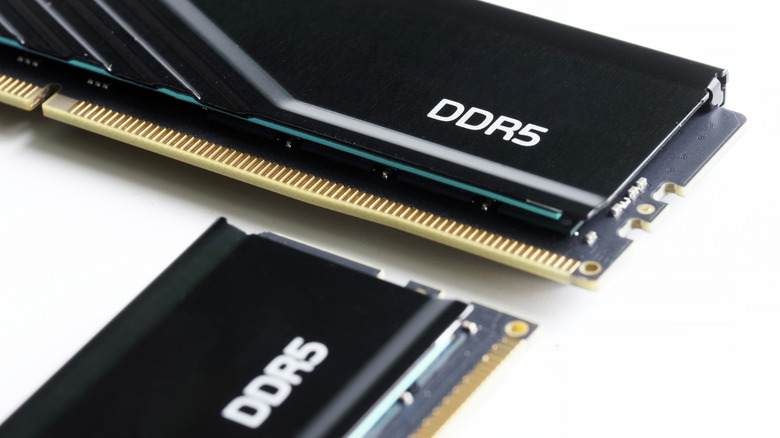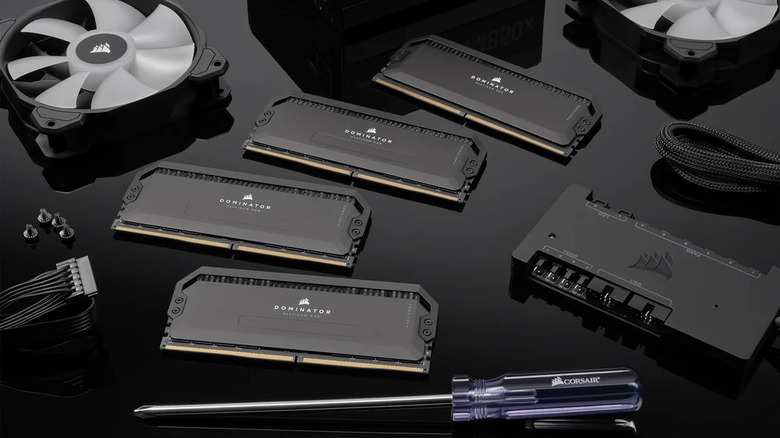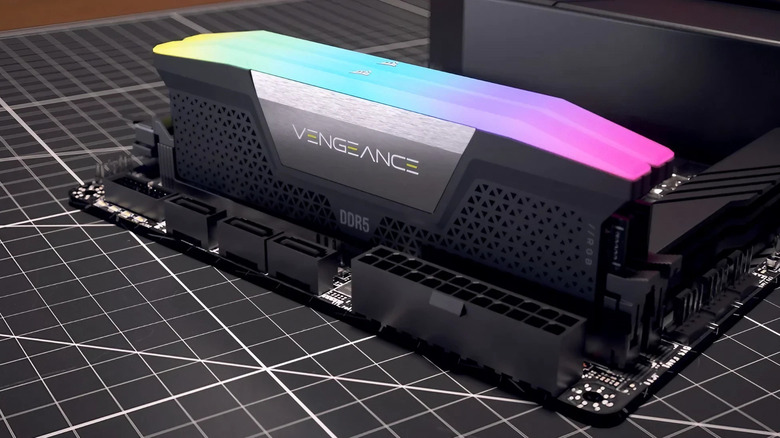What Does DDR5 RAM CAS Timing Mean And How Does It Impact Performance?
At first glance, seeing a string of numbers like "34-42-42-96" on RAM packaging might be puzzling — but they carry important technical meaning. They refer to memory timings, with the first indicating the Column Address Strobe (CAS) latency. CAS latency (CL) is simply the number of RAM clock cycles it takes for the memory module to get data ready for your CPU after it's been requested. For example, a RAM kit with a CAS latency of 34 takes 34 clock cycles to complete its task.
CL is just the first part of a longer timing sequence that also includes the RAS to CAS delay (tRCD), Row Precharge Time (tRP), and Row Active Time (tRAS). These values dictate other critical operations, such as the time it takes to activate the correct row and column where data is stored or the minimum time a row must remain active. Many will say that the lower the latency, the better, but CL doesn't always paint the full picture when it comes to latency and its impact on performance.
Do CAS timings really affect RAM performance?
Lower CAS latency may be better on paper, but its real-world impact is more nuanced than you'd think. The metric that truly matters is system-level latency, which is what you actually experience. To get a real sense of performance and compare two different kits, you'll need to calculate their "true latency," measured in nanoseconds (ns). The formula is: True memory latency (ns) = (2000/RAM Speed) x CAS latency. Using this, a DDR5-6800 kit with timings of 34-42-42-96 has a true latency of just 10.0 ns, showing that CL isn't the whole story.
While some of the best DDR5 RAM kits have numerically higher CAS latencies (like CL32 or higher) compared to DDR4 (often around CL16), their much faster clock speeds result in better overall performance. This is good news if you're planning to upgrade to the latest memory standard, as you can switch to DDR5 without worrying about latency. In fact, according to Crucial, standard DDR5-4800 memory with 40 CL only adds about 3% more system latency compared to DDR4-3200 with CL22 – a negligible difference in gaming.
TechRadar notes that you might only see a 1-5% improvement when comparing the slowest DDR5 RAM to the fastest, which is hardly a game-changer. Your system's overall performance is far more dependent on your graphics card and processor than the speed of your RAM. Unless you're trying to squeeze every last frame out of your setup, the difference between a CL32 kit and a CL40 kit will likely go unnoticed during gameplay.
Why investing in lower CAS latency isn't always worth the cost
Chasing the absolute lowest CAS latency can result in diminishing returns. The reality is that manufacturing and screening RAM for tighter timings is a difficult and expensive process, which means you'll have to pay more for those kits.. This premium isn't just for the memory itself. Pushing for bleeding-edge latency often requires splurging on high-end CPUs, motherboards, and better cooling solutions to handle the overclocking. Ultimately, for most users, opting for more RAM is more impactful than choosing faster RAM.
If your primary use case involves latency-sensitive workloads, like competitive first-person shooters, you might be able to justify the expense. Overclocked memory with tighter timings can be 10 to 20 ns faster than standard JEDEC memory at the system level. However, for the vast majority of users, this is overkill. You have to ask yourself if you're truly willing to pay the high price that comes with that minimal performance gain. Fortunately, the best RAM brands offer a wide range of RAM kits for casual and competitive users alike.


